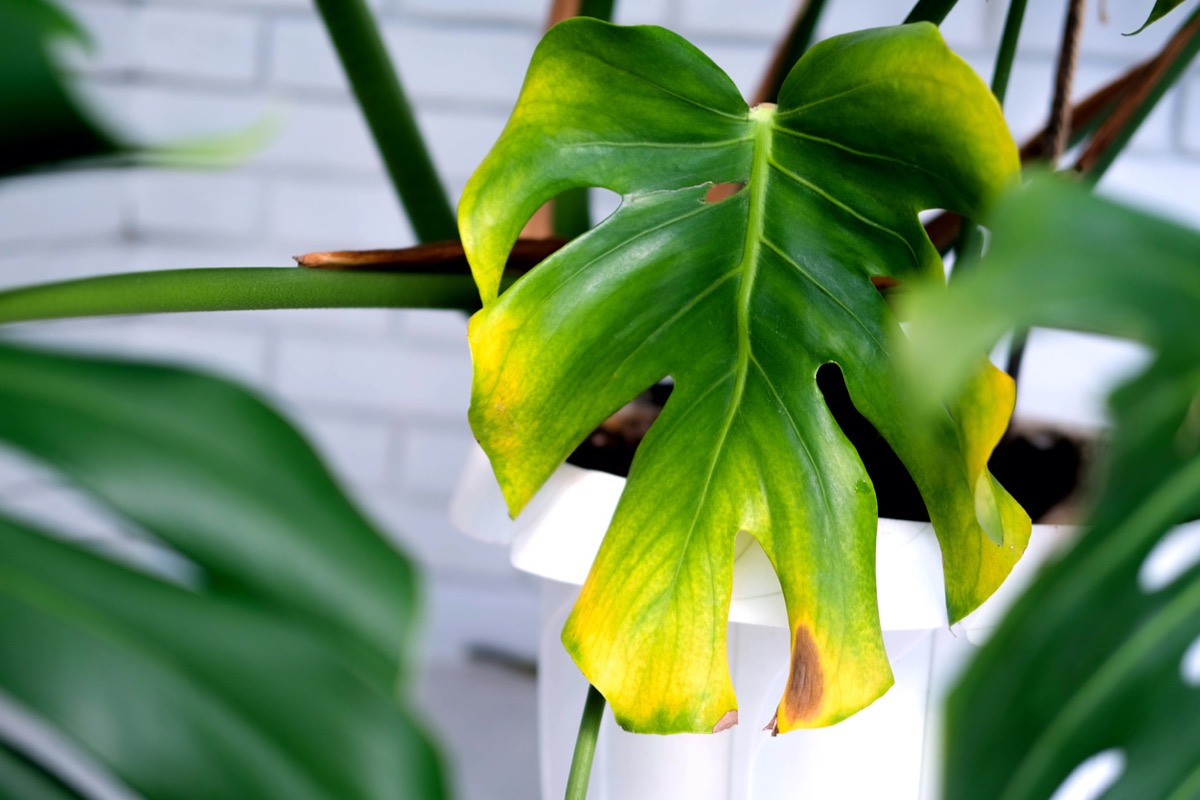Overwatering Symptoms: Identify and Save Overwatered Plants
One of the most common mistakes homeowners make when maintaining their gardens is overwatering plants. Overwatering symptoms can often be mistaken for other issues, which can be confusing and cause further damage. At O'Neill Landscape Group, we understand the importance of proper plant care.
Here, we'll discuss what an overwatered plant looks like, how to tell if it is, and ways to save it. We'll also compare overwatered vs. underwatered plants to help you maintain a perfect balance for your garden's health.
Signs of Overwatering Plants: What Does an Overwatered Plant Look Like?
Understanding the signs of overwatering is crucial for any gardener. The symptoms of overwatering can manifest in several ways, and recognizing these early can prevent further damage. Here are the seven most common signs of overwatering:

Yellowing Leaves: One of the first signs of overwatering is yellowing leaves. This occurs because the plant's roots are waterlogged and unable to absorb nutrients properly.
Wilting: Contrary to what many might think, overwatered plants can wilt like underwatered ones. The critical difference is that the soil around an overwatered plant will be damp.
Soft, Mushy Stems: Overwatered plants often have soft, mushy stems, which indicate that the roots are rotting due to excessive moisture.
Leaf Edema: This condition causes water-soaked spots on leaves. Over time, these spots can turn brown and crusty.
Root Rot: If you notice a foul smell from the soil or see dark, mushy roots, your plant likely has root rot, a typical result of overwatering.
Stunted Growth: Overwatered plants may exhibit stunted growth due to poor oxygen circulation in waterlogged soil.
Algae or Mold on Soil Surface: Excessive moisture can lead to algae or mold growth on the soil's surface, indicating overwatering.
How to Tell If Plants Are Overwatered: Simple Checks and Balances
Knowing how to tell if plants are overwatered involves a few simple steps. Firstly, check the soil moisture. Stick your finger about an inch into the soil; if it feels wet, you might be overwatering. Also, consider the weight of the pot; a consistently heavy pot indicates that the soil retains too much water.
Overwatered vs. Under Watered Plants: Key Differences
It's essential to distinguish between overwatered and underwatered plants, as the treatment for each is different. Underwatered plants will have dry, brittle soil and crispy leaves that are browning at the edges. Overwatered plants, on the other hand, will have yellowing leaves, mushy stems, and damp soil.
Can Plants Drown? Understanding the Risk
Yes, plants can drown if they are overwatered. When the soil is saturated with water, it creates an anaerobic environment, depriving the roots of oxygen. This can lead to root rot and eventually kill the plant.
How to Save an Overwatered Plant: Steps to Recovery
If you've identified the signs of overwatering in your plants, don't worry—you can take steps to save them. Here's how to save an overwatered plant:
Remove from Pot: Carefully remove the plant from its pot to inspect the roots.
Trim Damaged Roots: Cut away dark, mushy roots with clean scissors.
Dry Out the Soil: Let the plant sit in a dry area, allowing the roots and soil to air out.
Repot with Fresh Soil: Use fresh, well-draining soil to repot the plant.
Adjust Watering Schedule: Ensure you water only when the top inch of soil feels dry.
How to Know When to Water Plants: Tips for Prevention
Preventing overwatering is all about understanding your plant's needs and the environment they are in. Here are some tips to help you know when to water your plants:
Check Soil Moisture: Always check the soil moisture before watering. If the top inch is dry, it's time to water.
Watering Schedule: Establish a schedule based on your plant's needs and environmental conditions.
Proper Drainage: Ensure your pots have adequate drainage holes to prevent water from accumulating at the bottom.
Monitor Weather Conditions: Adjust your watering frequency based on the weather. Plants need more water in hot, dry conditions and less in cooler, damp weather.
Summary
In conclusion, overwatering is a common yet preventable issue for gardeners. You can keep your garden thriving by recognizing the signs of overwatering, understanding the differences between overwatered and under-watered plants, and knowing how to save an overwatered plant. Always check soil moisture before watering, adjust your watering schedule according to the weather, and ensure your pots have proper drainage. With these tips and the expertise of O'Neill Landscape Group, you can prevent overwatering and enjoy a healthy, vibrant garden.
Keep Your Plants Healthy with O'Neill Landscape Group
Maintaining the perfect water balance for your plants can be challenging, but it's achievable with the proper knowledge and expert help. Recognizing the symptoms of overwatering and taking immediate action can save your plants from irreversible damage. At O'Neill Landscape Group, we are here to assist you with all your landscaping needs, ensuring your garden remains vibrant and healthy.




